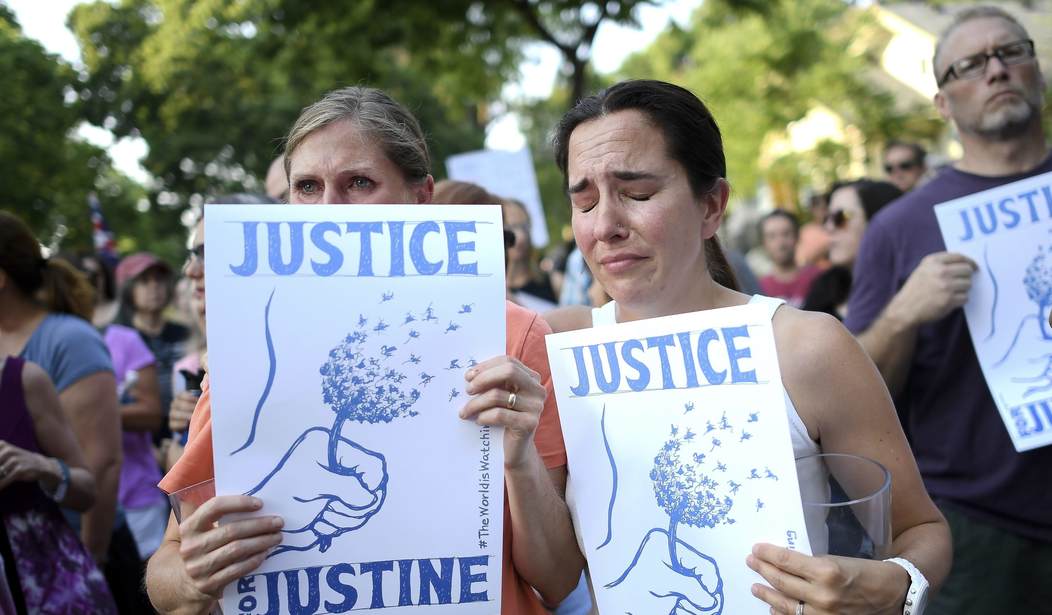Regular readers of my columns know that I often use this space to defend – or at least explain – the actions of police officers who, through a shooting or some other use of force, find themselves the focus of national controversy. This was the case earlier this week when I wrote in support of the Los Angeles County district attorney’s decision not to charge a now-former LAPD officer in the 2015 shooting death of a man near Venice Beach.
But there are some instances in which an officer’s conduct is so far outside the standards of police practices that it cannot be explained, much less defended. Such was the case of former Minneapolis police officer Mohamed Noor, who on Tuesday turned himself in after a warrant was issued for his arrest in the July 2017 shooting death of Justine Damond.
I wrote about the case about a week after the shooting, predicting at the time that Noor would be charged and convicted for killing Damond. Having followed the case these months and now having read the charging document, I am only more certain there was no lawful justification for Noor’s actions.
In my most recent column, I objected to an assertion made by a so-called police expert quoted by the Los Angeles Times in their story lamenting the L.A. DA’s decision not to prosecute in the Venice shooting. Eric Miller, a professor at Loyola Law School, made the outrageous claim that all an officer needs to do to have “blanket justification” for shooting a combative suspect is say he was trying to take the officer’s gun.
This is nonsense. Quoting from the previous column:
As Professor Miller presumably knows, the U.S. Supreme Court established the criteria for evaluating a police officer’s use of force in Graham v. Connor (1989). The Court held that “[t]he ‘reasonableness’ of a particular use of force must be judged from the perspective of a reasonable officer on the scene, rather than with the 20/20 vision of hindsight.” The question, said the Court, “is whether the officers’ actions are ‘objectively reasonable’ in light of the facts and circumstances confronting them.”
Which brings us to Mohamed Noor, who, we may presume, will present a defense claiming he shot Damond in the mistaken but honest belief that she presented a deadly threat to him and his partner. He will no doubt find someone calling himself a police use-of-force expert who will testify to that effect in the upcoming trial. It won’t wash.
Noor, who was fired from his job upon being charged, has not made a statement to investigators, as of course is his right. But any police officer who uses force must be able to articulate the reasons for it. We can see a glimpse of Noor’s defense in the charging document itself, in which Noor’s partner, Officer Harrity, is quoted as saying that as he and Noor reached the end of the alley after checking it for signs of the possible sexual assault Damond had reported, he was startled by a voice and a thump on their police car. Harrity told investigators that he unholstered his pistol and held it next to his ribcage while pointing it downward. It was then that Noor fired from the passenger’s seat, across Harrity, and out the open driver’s side window, striking Damond and killing her.
Most police officers have had the experience of someone approaching them unexpectedly while sitting in their cars. Some have even, as Officer Harrity did, drawn their guns at such a surprise. But no police officer would say it is “reasonable” within the meaning of Graham v. Connor to shoot someone whose only offense was to startle him. It is notable that Harrity, who was closer to Damond and in a better position to judge the potential danger, did not fire.
I distinguish the Damond shooting from that in which two LAPD officers shot a man who in 2015 threw a beer bottle through the back window of their police car. The officers, believing the man had shot at them, jumped from their car and opened fire, killing him. Having a beer bottle explode through the back window must indeed have been startling, and coming as it did during a time of heightened anxiety over ambush attacks of police offices, it is unsurprising that the officers reacted as they did.
But Justine Damond did not throw a beer bottle at the police car. Indeed, it was she who had called the police in the first place, which raises a question about the way Noor and Harrity handled the call. According to the charging document, Damond called 9-1-1 and reported she could hear a woman in the alley behind her house “who was either having sex or being raped.” Noor and Harrity were dispatched on the call, arriving in the vicinity about ten minutes later. Harrity, driving the patrol car, turned off his headlights and entered the alley from 50th Street, then drove south toward 51st Street and past the rear of Damond’s home. After finding nothing amiss in the alley, Harrity stopped at the southern mouth of the alley while Noor typed in a “code 4” on their car’s computer, indicating that no further assistance was needed.
The charging document says the officers were preparing to “clear” from the call and go to another when Noor shot Damond. I find this baffling. The officers had responded to a possible sexual assault in progress and, after driving through the alley and finding no evidence of a crime, were willing to leave without doing any further investigating. A radio call of this nature should not have been handled so perfunctorily.
Investigators never located the source of the noises Damond had reported, but let’s play “what if.” What if there had in fact been an assault taking place as Damond suspected, and the perpetrator, on seeing or hearing the approaching police car, had managed to silence his victim for the time it took the police to pass by? The appropriate measure after driving down the alley would have been to ask dispatch to contact the reporting party and ask for more information. Damond might have been able to provide a more precise location of the sounds she had heard, or, if a crime had actually been committed, might have seen the perpetrator making his getaway.
Instead, two inexperienced officers failed to take the extra step that was demanded under the circumstances. If they had asked for a call-back, Damond would have been contacted on the cellphone she had used to call 9-1-1 and was carrying when she was shot. She would have had no need to rush up to the police car as she evidently did.
But they didn’t, and she did. And no matter what else happened, you cannot make a case that shooting her was anything less than criminal.










Join the conversation as a VIP Member